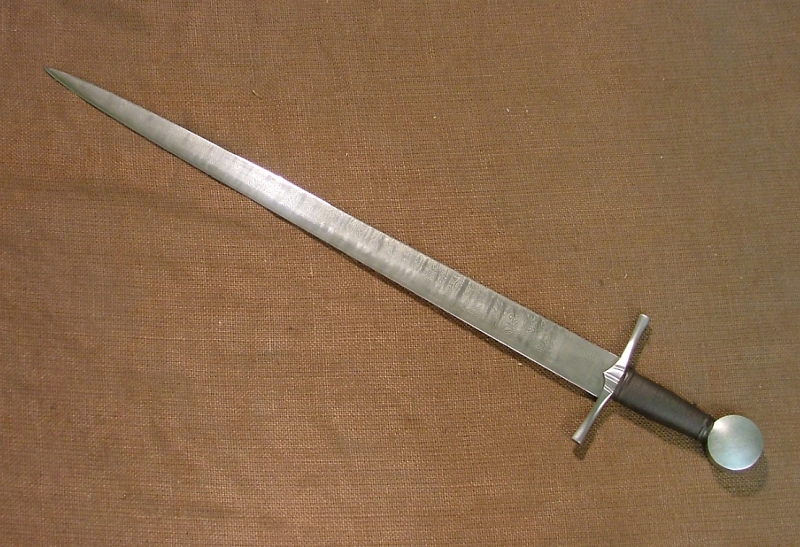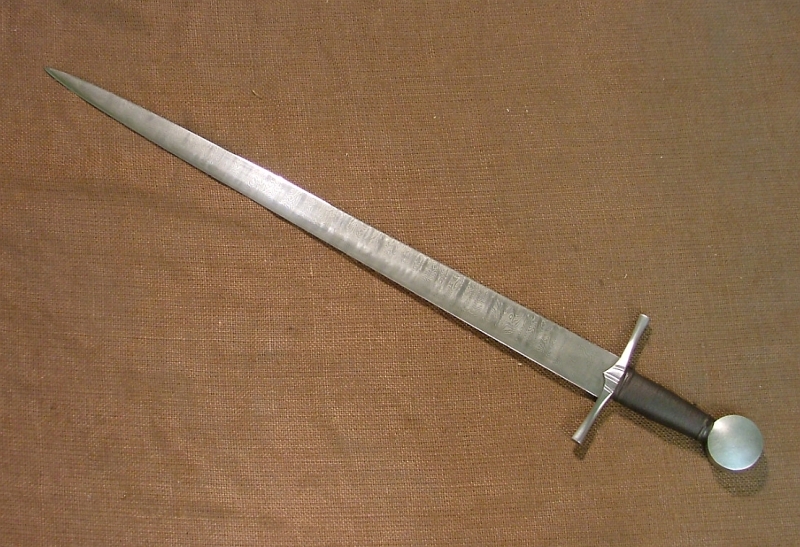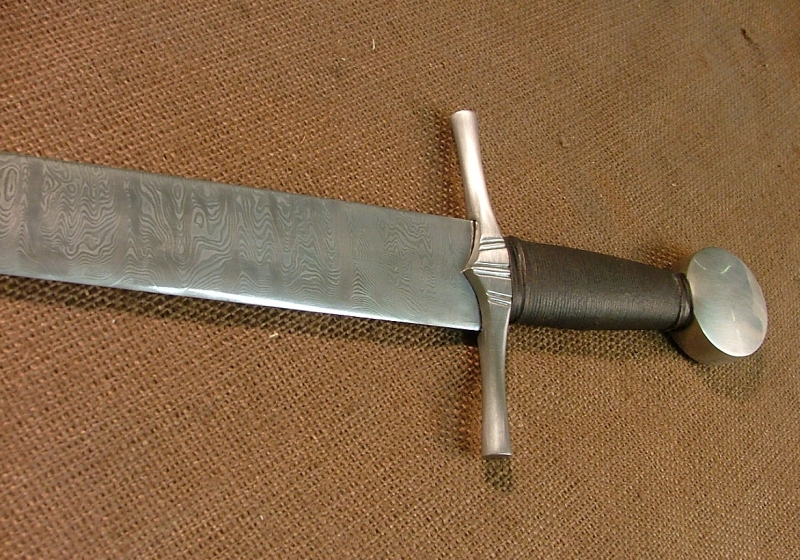[ Linked Image ]
This is inspired from an unusual but interesting 14th century, single edged, short sword from the Royal Armoury in Leeds.
[ Linked Image ]
I made this piece in pattern-weld to add to the piece. The pattern-weld is flawless and is 180 layers of L6 and 1095. This blade is really tough.
I am nearly done with the scabbard. I still have to forge the chape. It will be a nicely decorated leather covered wood core with a 14th century chape.
[ Linked Image ]
[ Linked Image ]
[ Linked Image ]
Here are some of the stats:
Steel: L6 and 1095, 180 layers
Weight: 2 pounds (0.907 kilos)
Blade: 23.23” (59.0 cm)
Overall: 28.8” (73.2 cm)
Grip Color: Dark Brown
This piece is sold. If you are interested in a similar piece, contact me at ericmycue@verizon.net to set up a custom order.




